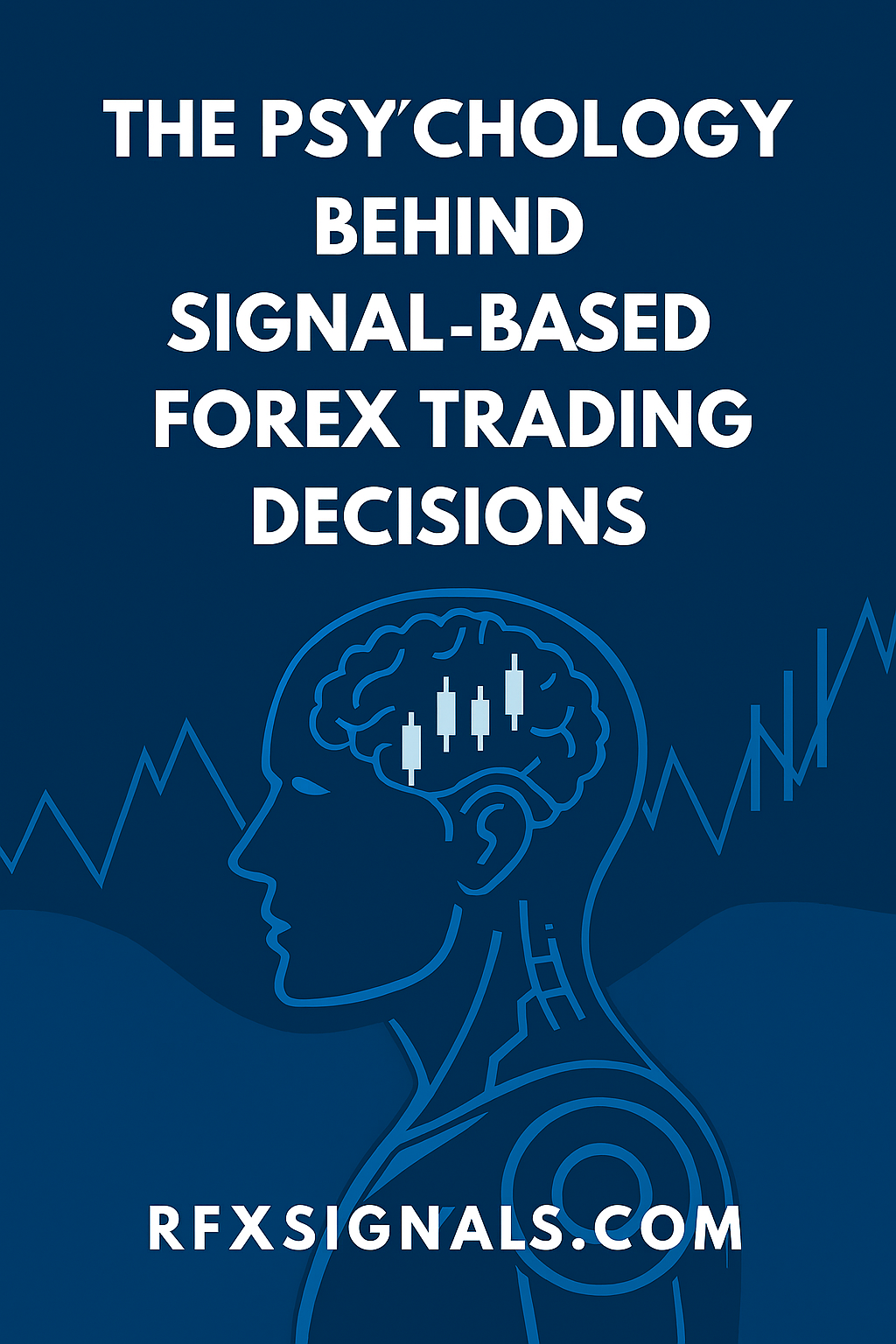
The Psychology Behind Signal-Based Forex Trading Decisions
Signal providers deliver opportunities — but how traders interpret, trust, and act on those signals is a psychological process. This guide explores biases, emotion, discipline, decision frameworks, and practical steps to make signal-based trading more consistent and profitable.
Why psychology matters in signal-driven systems
Signals offer a mechanical set of triggers — but the human who receives that signal must decide whether to act, modify, or ignore it. Psychological factors determine consistency, risk-taking, and how traders react during drawdowns or streaks. Even the best signal can underperform if traders fail to follow discipline or misinterpret confidence levels.
Common cognitive biases that affect signal-based trading
Confirmation bias
Traders tend to look for information that confirms their beliefs. If a trader expects a signal to be profitable, they may overemphasize supporting indicators and ignore evidence to the contrary. This leads to holding losing trades too long or reporting skewed feedback to signal providers.
Recency bias
Recent wins or losses dominate perception. A string of winning signals can make a trader overconfident; a run of losses may cause panic or abandonment of a viable system. Effective systems counter recency bias by relying on long-term metrics, not short-term streaks.
Loss aversion & risk framing
People feel losses more intensely than equivalent gains. This can cause under-sizing winners, moving stops, or exiting early. Proper position-sizing rules and pre-defined stop-loss behavior are key to preventing emotion-driven changes.
Action bias
Traders prefer doing something over doing nothing. When a signal conflicts with noise or when performance stalls, action bias can lead to overtrading, shifting strategies frequently, and destroying edge. A strong execution plan reduces the urge to act impulsively.
Signal interpretation: confidence, probability, and context
Not all signals are equal. Good providers include a confidence score or probability estimate. Traders should interpret signals probabilistically — e.g., a signal with 60% probability should be treated differently than a 90% confidence signal. Context matters: the same signal near a high-impact economic release or low liquidity hour carries different execution risks.
Tip: use signal buckets
Classify signals into buckets (high/medium/low confidence) and map different position-sizing rules to each bucket. This aligns risk with expected edge and reduces emotional reactions when low-confidence signals fail.
Discipline, routines, and decision frameworks
Consistent behavior beats intuition. Create a pre-trade checklist that includes: signal ID, confidence bucket, pair/timeframe, planned entry/SL/TP, and maximum capital at risk. After each trading day or week, run a short review to track adherence and outcomes. Routines automate good behavior and expose deviations quickly.
Daily checklist example
- Review active signals and confidence levels.
- Check macro calendar and liquidity windows.
- Confirm order execution method (manual/auto) and expected fills.
- Log any deviations from the plan with a reason.
Managing emotions during drawdowns and streaks
Drawdowns are inevitable. The goal is to survive them with capital and sanity intact. Implement hard risk caps (max drawdown limit), step-down rules (reduce size after X losing trades), and forced cooling periods if drawdown thresholds hit. These rules prevent emotionally-driven ruinous recovery attempts.
Trust but verify — backtesting, forward-testing, and live sampling
Trust in signals should be earned. Require backtested metrics, but more importantly, forward-test on a demo or micro account to observe live slippage and execution behavior. Keep a live-sample log for at least 30–90 days before scaling. Seeing real results builds rational trust and reduces the temptation to alter rules prematurely.
Social proof, group behavior & herd mentality
Signal channels and group chats can amplify herd behavior. When dozens of traders act on the same signal simultaneously, execution quality and slippage can worsen. Use staggered entries, limit orders, or size caps to mitigate crowd impact. Be cautious about copying large crowd trades without understanding execution mechanics.
Designing a psychologically-resilient signal process
- Clear rules: unambiguous entry, stop, and exit rules remove interpretation variance.
- Graded risk: size trades to confidence buckets — smaller size for lower confidence.
- Pre-commitment devices: use limit orders, automation, or two-step confirmations to avoid emotional changes.
- Logging: maintain a simple trading journal that records the signal id, your action, and post-trade notes.
- Review cadence: weekly metric check and monthly strategy review to spot psychological leaks.
Role of automation to reduce human error
Automation reduces action bias and emotional interference. Simple automation — auto-entry at next bar open, fixed stops, and scheduled daily checks — preserves discipline. However, full automation must include safety nets: circuit breakers, max concurrent trades, and human override for abnormal market events.
Practical checklist for traders using signals
- Confirm signal confidence and bucket; size accordingly.
- Use a pre-trade checklist (entry, SL, TP, size, context).
- Implement hard risk limits and cooling rules for losing streaks.
- Forward-test live for 30–90 days before scaling capital.
- Keep a concise trade log and monthly performance review.
Related posts (internal & outbound link opportunities)
Final thoughts — trade signals, not emotions
Signals provide opportunities; psychology decides outcomes. By building clear rules, aligning risk with signal confidence, automating execution where sensible, and maintaining disciplined review habits, traders can reduce psychological leaks and let signal edge compound over time. If you’d like a downloadable pre-trade checklist and a sample trade-log CSV to start tracking, reply "Send checklist" and I’ll generate them for you.